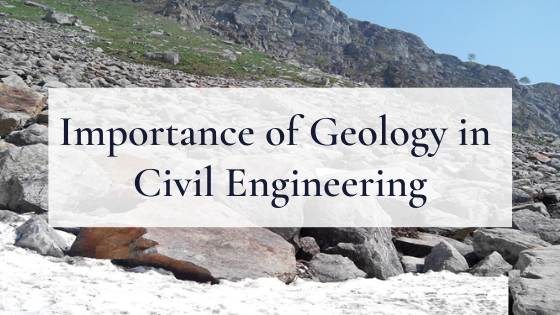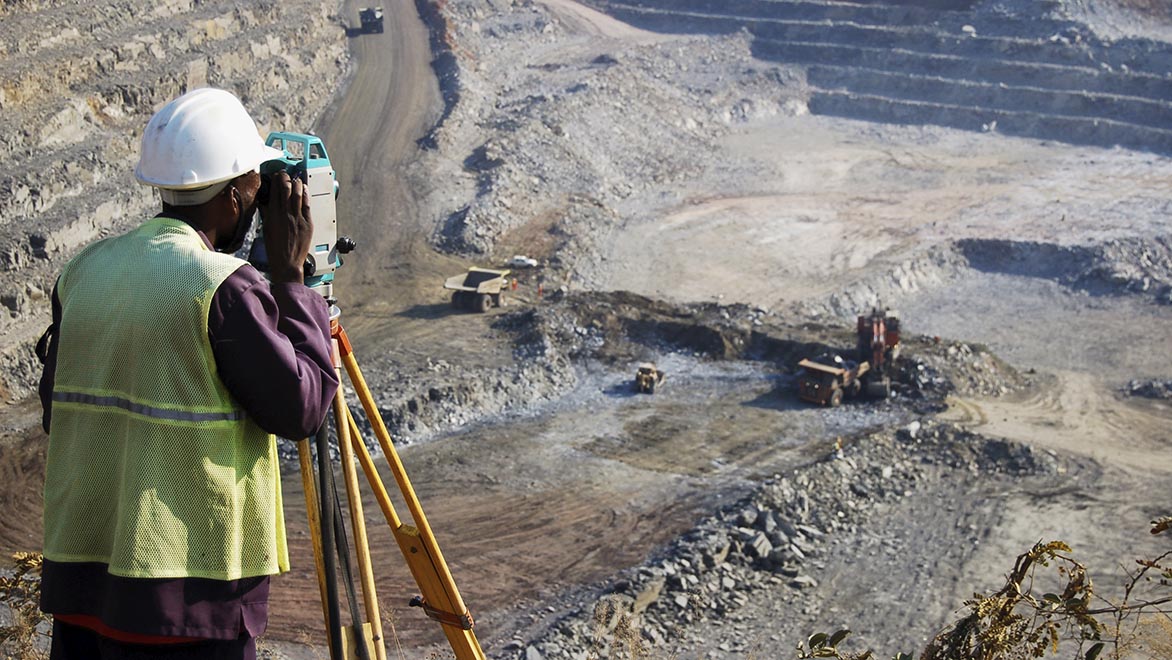The Facts About Geotechnical Engineering For Construction Projects Revealed
The Facts About Geotechnical Engineering For Construction Projects Revealed
Blog Article
See This Report on Geotechnical Engineering For Construction Projects
Table of ContentsThe Ultimate Guide To Geotechnical Engineering For Construction ProjectsSome Known Facts About Geotechnical Engineering For Construction Projects.Geotechnical Engineering For Construction Projects Fundamentals ExplainedThe 9-Second Trick For Geotechnical Engineering For Construction ProjectsFascination About Geotechnical Engineering For Construction ProjectsGeotechnical Engineering For Construction Projects Things To Know Before You Get ThisAll About Geotechnical Engineering For Construction Projects
and Kovacs, W. (1981 ), An Introduction to Geotechnical Design, Prentice-Hall, Inc. Deep Scan Technology (2023 ): Deep Check Tech reveals covert frameworks at the site of Denmark's highest structure. "Geofrost Coring". GEOFROST. Gotten 20 November 2020. Han, Jie (2015 ). Principles and Practice of Ground Improvement. Wiley. ISBN 9781118421307. RAJU, V. R.Ground Improvement Technologies and Situation Histories. Singapore: Research Study Posting Providers. p. 809. ISBN978-981-08-3124-0. Ground Renovation Concepts And Applications In Asia. Pariseau, William G. (2011 ). Style evaluation in rock mechanics. CRC Press. Hegde, A.M. and Palsule P (Geotechnical Engineering for Construction Projects).S. (2020 ), Efficiency of Geosynthetics Reinforced Subgrade Subjected to Repeated Lorry Loads: Speculative and Numerical Researches.
Cengage Knowing, Stamford, 666 p. Atkinson, J., 2007. The technicians of dirts and foundations. The Observational Method in ground design concepts and applications.
Examine This Report on Geotechnical Engineering For Construction Projects
Laboratory and area testing plays a crucial duty in this process. By extracting examples from the earth's subsurface and using a suite of examinations, geotechnical designers can anticipate the behavior of dirt layers and examine their viability for various building and construction endeavours. The essence of geotechnical design in civil engineering can not be overemphasized, attributable to numerous aspects: The first step in any geotechnical research study involves figuring out the dirt kind at the building website.
The foundation acts as the bedrock of any type of building and construction task. Selecting the appropriate foundation type is a choice that pivots on the thorough evaluation given by geotechnical design.

Geotechnical website examination is an essential action in the preparation and implementation of any type of building project. It involves the collection and analysis of information connected to the physical residential properties of soil and rock below a recommended building and construction website. This info is vital for the design and building and construction of secure, steady, and lasting frameworks.
Geotechnical Engineering For Construction Projects Can Be Fun For Everyone
In this blog, we will certainly explore the value of geotechnical site examination, its different components, and exactly how it benefits building and construction jobs. Geotechnical website examination, also referred to as subsurface expedition, includes a collection of tasks focused on establishing the soil, rock, and groundwater problems at a construction site. The primary goals are to identify prospective geotechnical hazards, analyze the engineering buildings of subsurface materials, and give recommendations for the layout and building of structures, keeping wall surfaces, and various other structures.
The workdesk research aids in recognizing possible geotechnical concerns and intending the succeeding fieldwork. This entails observing the topography, water drainage patterns, existing frameworks, plants, and any signs of instability or erosion.
The smart Trick of Geotechnical Engineering For Construction Projects That Nobody is Talking About
Superficial test pits are dug deep into to straight observe and sample the dirt and rock. This technique is useful for researching the upper layers of the subsurface and determining near-surface dangers. Non-invasive geophysical methods, such as seismic refraction, ground-penetrating radar (GPR), and electric resistivity tomography (ERT), are utilized to map subsurface problems and find anomalies.
Dirt and rock samples accumulated during the area investigation undergo laboratory testing to establish their physical and mechanical homes. Common lab examinations include grain size analysis, Atterberg restrictions, compaction tests, triaxial shear tests, and combination examinations. These tests supply vital data for geotechnical analysis and style. The information collected from the workdesk research, site reconnaissance, area examination, and laboratory testing are examined and interpreted to establish a comprehensive understanding of the subsurface conditions.
The primary benefit of geotechnical site investigation is ensuring the security and security of frameworks. By recognizing the subsurface conditions, engineers can create structures and various other architectural components that can endure the lots and ecological pressures they will certainly undergo. This decreases the threat of negotiation, decrease, and structural failure.
The Ultimate Guide To Geotechnical Engineering For Construction Projects
For instance, recognizing dirt attributes can assist the choice of excavation techniques, dewatering approaches, and ground enhancement steps. This guarantees reliable and risk-free construction techniques. Geotechnical site examinations are usually called for by developing codes and regulations. Complying with these requirements ensures conformity with lawful and security criteria, avoiding possible legal responsibilities and project hold-ups.
This information is very useful for project supervisors, architects, and specialists in creating sensible schedules, budgets, visit the site and contingency strategies. link Geotechnical Engineering for Construction Projects. Skyscraper in a Coastal AreaIn a seaside city, a skyscraper domestic structure was intended on a site with presumed loosened sand deposits and a high water table. An in-depth geotechnical examination, including borehole boring, CPT, and geophysical studies, was conducted
The smart Trick of Geotechnical Engineering For Construction Projects That Nobody is Talking About
Based upon these searchings for, the foundation style was modified to consist of deep stack foundations extending into steady strata, and ground enhancement techniques, such as vibro-compaction, were carried out to alleviate liquefaction dangers. This proactive method made sure the security and stability of the structure while preventing pricey post-construction remediation. Infrastructure Development on a Sloping TerrainA significant framework job, involving the building of a freeway and bridges, was intended on a hilly surface with steep slopes.

The Leaning Tower of Pisa (Italy), a famous architectural wonder, is notorious for its unexpected tilt from significant geotechnical concerns. The tower's structure was inadequately created to deal with the soft, unstable dirt below it, leading to uneven negotiation and its distinctive lean. Our globe is dotted with excellent infrastructure projectsfrom looming skyscrapers to stretching bridgesall standing statement to the evolution of the different construction tools and methods readily available.
Geotechnical engineering is a customized field within civil design that focuses on researching the habits of planet materials. This branch dives deep right into the groundinvestigating how the soil, rock, and groundwater at a building and construction website can influenceand be influenced bythe framework that we erect on and right into them. Before a single block is laid or a concrete structure poured, geotechnical designers probe into the earthgathering essential data about the site's dirt make-up, rock structure, and groundwater degrees.
Rumored Buzz on Geotechnical Engineering For Construction Projects

is a device used to examine the integrity and load-bearing capability of heaps during installment, leveraging the concept of wave breeding. It optimizes building efficiency by offering real-time analyses, hence making sure secure and reliable stack structures. One of the sensible applications of geotechnical design includes deciding and implementing the ideal approaches for structure construction.
Stack driving stands for even more than the plain act of placing structural elements right into the ground. On the other hand, it is a very carefully coordinated procedure of moving a framework's load important site past the less stable soil layers closer to the surfacedown to the much more considerable strata that lie beneath. When it comes to stack driving, think about exactly how geotechnical engineers skillfully use this technique to evenly distribute the structure's weight.
Report this page